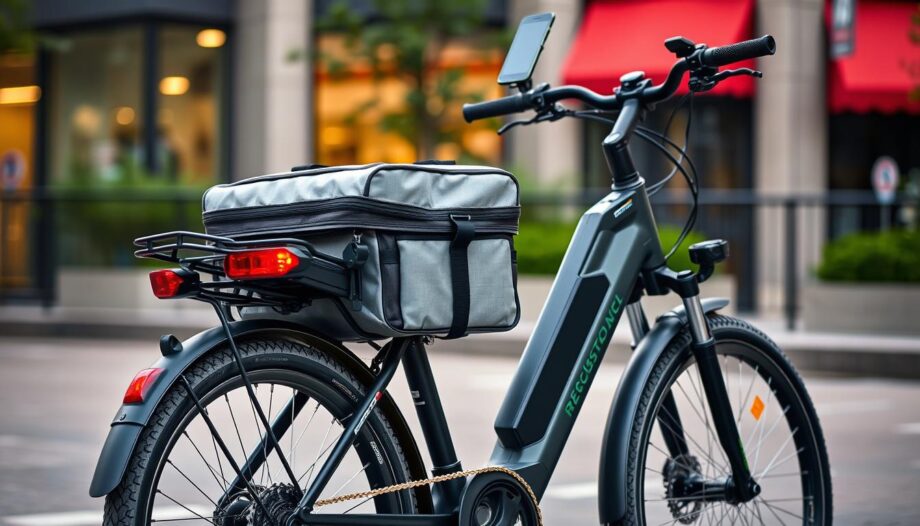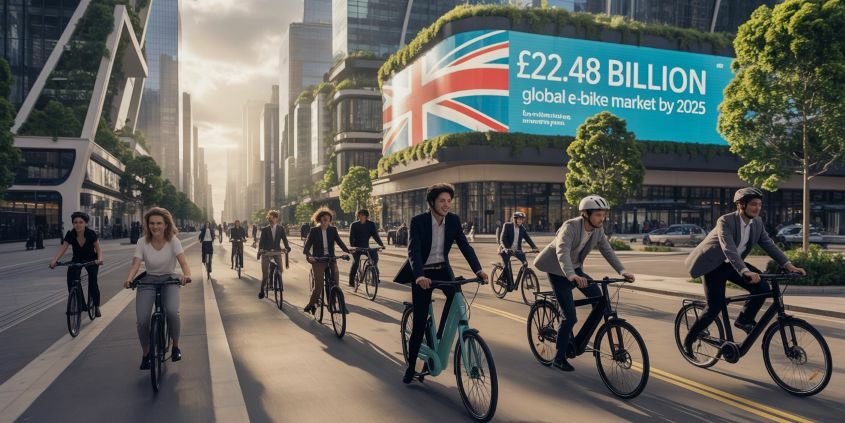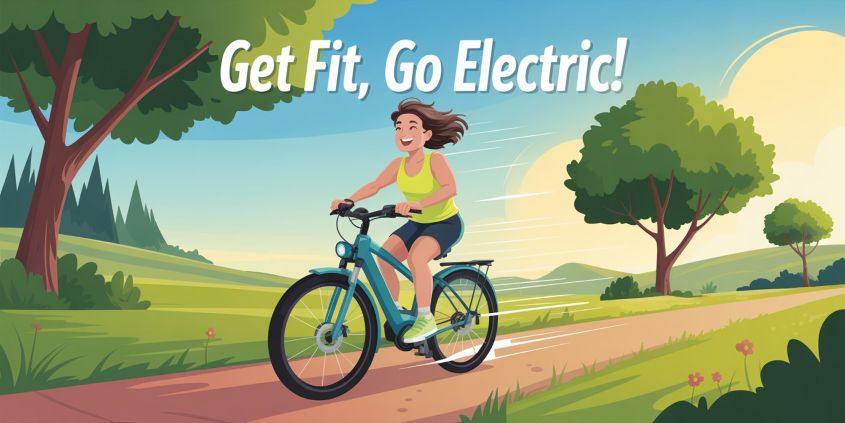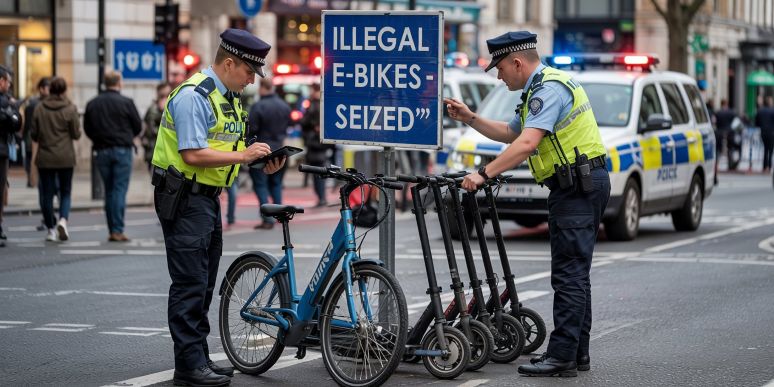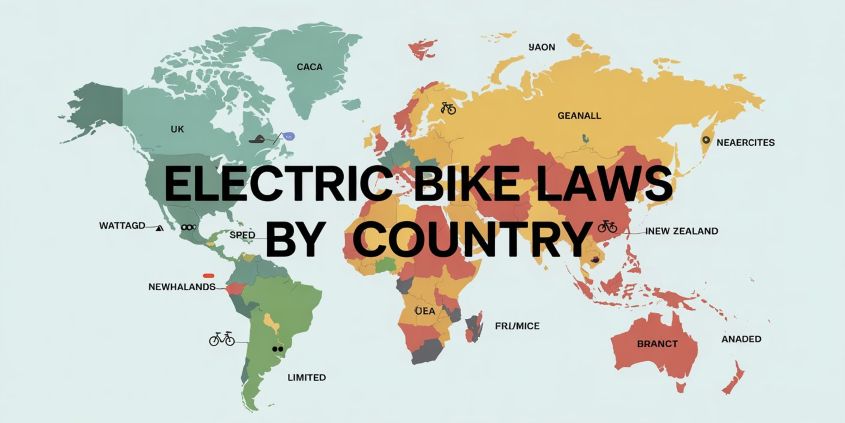Are you curious if your e-bike is legal on UK roads? The complexity of electric bike laws can be confusing. There are many rules for different e-bikes.
A tool has been made to check if your e-bike follows UK laws. It helps you know if your e-bike is legal. This way, you can ride without worrying about legal problems.
Key Takeaways
- Understand the legal status of your e-bike in the UK
- Learn about the regulations governing electric bikes
- Discover how to ensure your e-bike is roadworthy
- Find out how the tool can simplify the process
- Stay informed about the laws affecting your e-bike
The E-Bike Revolution and Legal Challenges
E-bikes are changing how we travel. It’s key to know the law for riders. The e-bike market is growing fast. More people choose electric bikes for a green and quick way to get around.
Why E-Bike Regulations Matter to Every Rider
Rules for e-bikes are about keeping everyone safe. Knowing e-bike road traffic regulations helps riders stay out of trouble. It makes the roads safer for everyone.
The Costly Consequences of Non-Compliance
Not following electric bicycle legal requirements can cost a lot. You might get fined or have your bike taken away. It shows why it’s important to know and follow the law.
Riders need to know the e-bike laws in their area. This way, they can ride without worries.
Is My E-Bike Road Legal UK Tool: Your Ultimate Legality Checker
I’ve made a tool for e-bike fans to check if their bike is legal in the UK. It makes it easy to see if your e-bike follows UK laws.
The Vision Behind Creating This Tool
This tool aims to help e-bike riders know the law. Knowing uk e-bike restrictions helps you avoid fines and ride safely.
How It Simplifies Complex Regulations
Our tool makes it easy by looking at your e-bike’s details. It checks motor power, speed, and design to see if it’s legal.
Countries Currently Supported
Our tool works in the UK now. We plan to add more countries soon.
Specifications Analyzed
The tool looks at several things, like:
- Motor power output
- Maximum speed
- Type of e-bike (e.g., pedal assist or throttle)
- Design features (e.g., presence of pedals)
| Specification | UK Requirement | Your E-Bike |
|---|---|---|
| Motor Power | 250W or less | Variable |
| Max Speed | 25km/h | Variable |
| Type | Pedal Assist or Throttle | Variable |
With our tool, you can quickly see if your e-bike is legal. It checks if it meets the electric bike legal speed uk rules and more.
“The e-bike industry is rapidly evolving, and our tool is designed to keep pace with the changing regulations.”
UK E-Bike Laws Demystified
As an e-bike fan, I’ve found out that UK laws are key for a smooth ride. The UK has rules to make sure e-bikes are safe and used right.
EAPC Requirements: Power, Speed, and Design
The UK calls certain e-bikes Electrically Assisted Pedal Cycles (EAPC). To be an EAPC, an e-bike must have:
- A motor that’s no more than 250 watts strong
- A motor that can’t push the bike over 25 km/h
- A pedal system to start the motor
The e-bike’s design is also important. It should have a “pedal-assist” system. This means the motor helps only when you pedal.
Throttle Regulations and Common Misconceptions
Many think all e-bikes with throttles are banned in the UK. But it’s not that simple. EAPC-compliant e-bikes can have throttles. But, the throttle must stop working at 25 km/h or more without pedaling.
Transport for London says, “a throttle is okay, but it must stop at 25 km/h.”
Registration and Insurance Requirements
Most EAPC-compliant e-bikes don’t need to be registered or insured. But, if your e-bike doesn’t fit EAPC rules, it might be seen as a moped or motorcycle. This means different rules apply.
When Your E-Bike Becomes a Moped
If your e-bike’s motor is over 250 watts or can move fast without pedaling, it’s seen as a moped. Then, you’ll need to register it, get insurance, and wear a helmet that meets certain standards.
“The e-bike is treated as a moped or motorcycle if it doesn’t meet the EAPC requirements, and this changes the regulatory landscape entirely.”
Knowing these rules is key for following the law and enjoying e-biking in the UK.
Step-by-Step Guide to Using the Legality Checker Tool
Learn how to use the legality checker tool for e-bikes. It helps you know if your e-bike is legal in the UK.
Selecting Your Country of Operation
First, pick your country. This makes sure the rules match where you live. If you’re in the UK, choose ‘United Kingdom’.
Entering Your E-Bike’s Technical Specifications
To check if your e-bike is legal, enter its details. You need:
- Finding Your Motor Wattage: Look in your e-bike’s manual or on the manufacturer’s website. This is key for legal status.
- Determining Your Top Speed: Check your e-bike’s papers or ask the maker if you’re not sure.
- Identifying Throttle Type: See if your e-bike has a throttle or needs pedaling. This affects UK rules.
Finding Your Motor Wattage
Motor wattage is in your e-bike’s manual or on the maker’s website. If you’re still unsure, ask the maker’s support.
Determining Your Top Speed
Look at your e-bike’s specs for the top speed. Make sure it’s the speed with the e-bike’s help.
Identifying Throttle Type
See if your e-bike moves without pedaling or needs pedaling. This decides its UK legal status.
Interpreting Your Results
After entering your e-bike’s details, the tool will tell you if it’s legal. If not, it will say what to do.
Transforming Your Non-Compliant E-Bike into a Legal Ride
To make your e-bike legal, first learn about UK rules. You need to follow rules on motor power, speed, and throttle control.
Motor Power Modifications and Limitations
The motor power is a big worry for e-bike owners. In the UK, e-bikes can’t have more than 250 watts of power. If your e-bike’s motor is too strong, you can make it 250 watts by changing settings or getting a new motor.
Speed Limiter Installation Options
Speed is also key. E-bikes can’t go faster than 25 km/h without pedaling. A speed limiter can help keep your e-bike within the speed limit. There are many types of speed limiters, some that work with your e-bike’s system.
Throttle Adjustments for UK Compliance
Throttle settings are important too. UK rules say e-bikes can’t go fast with just the throttle. You might need to change or replace the throttle to follow this rule. Here’s a quick guide:
| Modification | Description | Compliance Benefit |
|---|---|---|
| Motor Power Reduction | Adjust or replace the motor to limit power to 250 watts | Ensures compliance with UK power regulations |
| Speed Limiter Installation | Install a device to limit the e-bike’s speed to 25 km/h | Ensures the e-bike does not exceed legal speed limits |
| Throttle Adjustment | Adjust or replace the throttle to prevent speeds above 25 km/h | Ensures compliance with UK throttle regulations |
With these changes, you can make your e-bike legal. This way, you follow UK rules and can ride safely.
European Union E-Bike Regulations Through My Tool
My tool helps you understand EU e-bike rules. The EU has many rules that change from country to country.
EU-Wide Standards vs. Country-Specific Rules
The European Union has set EU-wide standards for e-bikes. They are divided by power and speed. But, each country has its own rules too. It’s important to know both EU and local laws.
Using the Tool for Cross-Border European Travel
Traveling in Europe means knowing the rules. My tool gives you info for each country. This way, you can check if your e-bike is legal in different places.
Key Differences to Watch For
Look out for changes in power limits, speed restrictions, and required safety features. Knowing these can help you avoid fines and have a good trip.
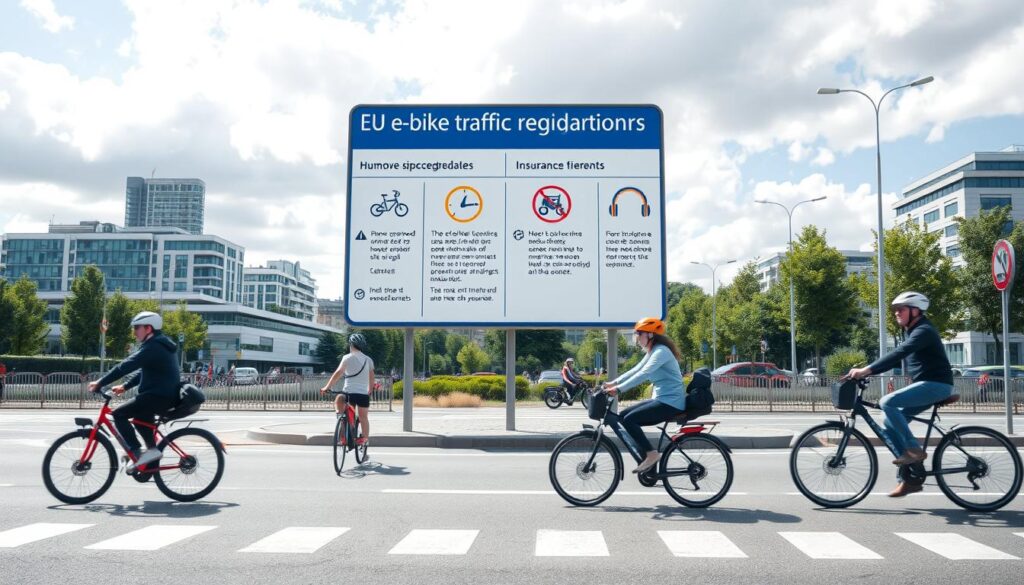
With my tool, you can deal with e-bike rules easily. This makes sure your ride follows local laws.
North American E-Bike Classification Made Simple
The e-bike revolution in North America needs clear rules. E-bikes are getting more popular. So, laws have changed to keep riding safe and right.
Navigating USA’s Three-Class System
In the United States, e-bikes fall into three groups. Class 1 e-bikes help you pedal but stop at 20 mph. Class 2 e-bikes have a throttle and also stop at 20 mph. Class 3 e-bikes help you pedal up to 28 mph. Knowing these classes is key to following the law.
Canadian Provincial Variations
Canada’s e-bike rules change from province to province. Some provinces use a similar system to the USA. But others have their own rules. It’s vital for Canadian riders to know their province’s laws.
How My Tool Handles These Complexities
My e-bike legality tool helps with North American rules. Just enter your e-bike’s details. It tells you its class and the laws in the USA and Canada. This keeps you riding legally and safely.
Oceania’s Unique Approach to E-Bike Regulation
Oceania, made up of Australia and New Zealand, has its own rules for e-bikes. These rules are different in each country. It’s interesting to look at how they handle e-bikes.
Australian Standards and State Differences
In Australia, e-bike laws vary from state to state. The country has federal rules too. These rules depend on the e-bike’s power and if it has a throttle.
But, each state like New South Wales and Victoria has its own rules. Some states say you must wear a helmet. Others have rules about where you can ride.
- Check local state laws for e-bike regulations.
- Ensure compliance with both federal and state rules.
- Familiarize yourself with path and road usage rules.
New Zealand’s Pragmatic E-Bike Framework
New Zealand has simple rules for e-bikes. They look at the e-bike’s power and speed. If it meets these, it’s treated like a normal bike.
“New Zealand’s approach to e-bike regulation is pragmatic and encourages the adoption of e-bikes as a sustainable transport option.”
Tool Accuracy for Down Under Riders
I’ve made a tool to help riders in Australia and New Zealand. Just enter your e-bike’s details. It will tell you if it’s legal.
The tool knows all the rules in each place. So, you get advice that’s right for you.
Key benefits of using the tool include:
- Accurate compliance checking based on your e-bike’s specs.
- Up-to-date information on local regulations.
- Personalized advice for Australian and New Zealand riders.
Asian and Global E-Bike Laws at Your Fingertips
E-bike fans face many laws in different places. As e-bikes get more popular, knowing the laws in each area is key.
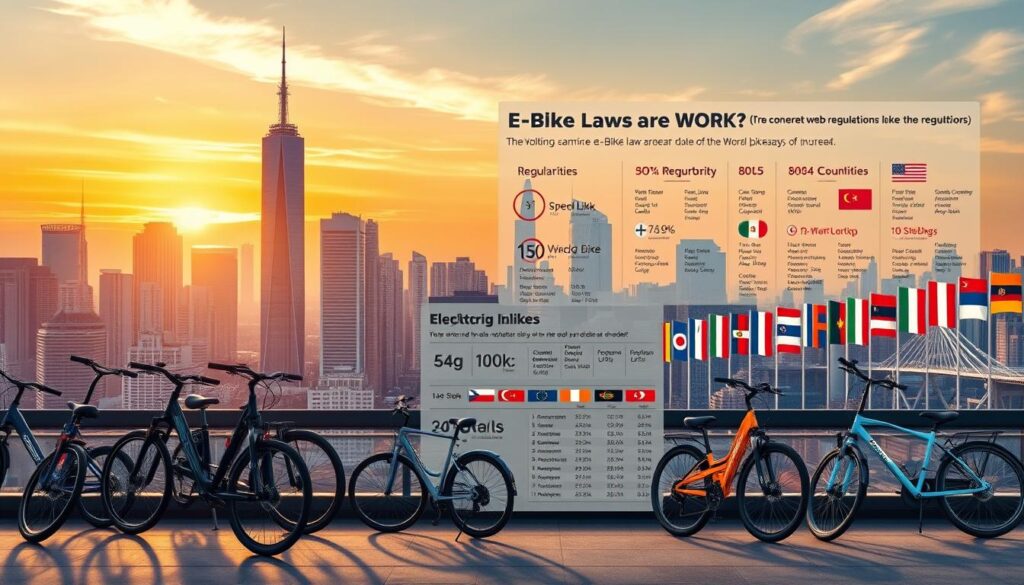
Singapore, India, and Japan: Tech-Forward Regulations
Singapore, India, and Japan lead in e-bike tech and rules. Singapore has strict rules for e-bikes and riders. India aims to boost e-bike use while keeping it safe. Japan mixes new tech with safety well.
Important e-bike rules in these places include:
- Speed Limits: Speeds range from 25 km/h to 45 km/h, based on the e-bike type.
- Motor Power Restrictions: Motors are capped at 250 watts or less for some e-bikes.
- Rider Requirements: There are age limits, helmet laws, and sometimes insurance needs.
Brazil and South Africa: Emerging E-Bike Markets
Brazil and South Africa are seeing more e-bikes. Brazil is growing due to green concerns and traffic. South Africa is also seeing more e-bikes, mainly in cities.
Important things to know in these markets are:
- Rules are still being made.
- There are challenges with bike paths and roads.
- There are efforts to teach safe riding.
How My Tool Stays Current with International Changes
Keeping up with e-bike laws worldwide is hard. My tool updates its info regularly. It checks government sites and talks to e-bike groups.
With my tool, riders can check if their e-bike is legal in many places. This helps them follow the rules and ride safely everywhere.
Real-World Scenarios: Solving Common E-Bike Legality Issues
E-bikes are getting more popular. Knowing the rules for electric bikes is key. We’ve all faced the challenge of making our e-bikes legal. Here, I’ll share stories of solving common e-bike legal problems.
Case Study: Converting a US Import for UK Roads
Many face the challenge of making a US e-bike legal in the UK. A US e-bike might have a stronger motor or different controls. First, learn about the UK’s Electrically Assisted Pedal Cycle (EAPC) rules.
To fix this, you can change the motor’s power to 250 watts. Make sure it stops at 15.5 mph. You might need to reprogram the motor or get a new one that meets UK standards.
| Modification | Purpose | UK Compliance |
|---|---|---|
| Limit Motor Power to 250 watts | Comply with EAPC power limit | Yes |
| Adjust Speed Cut-Off to 15.5 mph | Meet EAPC speed requirement | Yes |
| Throttle Adjustment or Replacement | Ensure throttle complies with UK regulations | Yes |
Case Study: Addressing Over-Powered Motors
Dealing with motors that are too strong is another problem. If your motor is over 250 watts, it’s not legal. You can swap the motor for a legal one or tweak the current one.
Case Study: Throttle Compliance Solutions
Throttle rules are also key. UK laws say e-bikes must have pedals and only help when pedaling (except in some cases). Changing or swapping the throttle is crucial.
By tackling these common problems, e-bike owners can make sure their rides are legal, safe, and fun.
Beyond Legality: Safety and Responsible E-Biking
E-biking is more than just following the rules in the UK. It’s about being safe and responsible. Our actions on the road affect not just our safety but also others around us.
The Connection Between Regulations and Safety
Rules are made to keep us safe on the roads. By following the laws for riding e-bikes in the UK, we avoid legal trouble. We also help make the roads safer for everyone.
For example, e-bikes need working brakes and lights. This is key to stopping accidents.
Insurance Considerations for Compliant E-Bikes
Getting the right insurance for your e-bike is very important. Even though e-bike number plate rules UK aren’t needed, insurance helps a lot. It covers you if your e-bike gets stolen or if you’re in an accident.
Make sure to talk to your insurance company. They can tell you what your policy covers.
Being an Ambassador for Responsible E-Mobility
We, as e-bike riders, are leaders for the e-mobility world. By following the rules and being kind to others, we show e-biking in a good light. This makes more people want to try e-biking.
| Aspect | Regulation | Benefit |
|---|---|---|
| Safety Features | Functioning brakes and lights | Prevents accidents |
| Insurance | Financial protection | Covers theft and accidents |
| Compliance | Adhering to e-bike laws | Promotes a positive e-biking image |
Your Journey to E-Bike Compliance Starts Now
Now you know about electric bike laws in the UK and more. It’s time to make sure your e-bike is legal. This is not just to avoid fines. It’s also about being a responsible and safe cyclist.
Using the “is my e-bike road legal uk tool” is easy. Just enter your e-bike’s details to check if it’s legal. If it’s not, our guide shows you how to fix it.
Start making your e-bike legal today. Check if it’s legal, make any changes needed, and ride with confidence. This way, you stay safe and help make the e-bike community better.
FAQ
What are the key factors that determine if my e-bike is road legal in the UK?
The main things to check are the motor power, top speed, and if it has a throttle or pedal-assist. It also needs to follow Electrically Assisted Pedal Cycle (EAPC) rules.
How do I check if my e-bike complies with UK e-bike laws?
Use my e-bike legality checker tool. It checks your e-bike against UK rules, like EAPC and throttle rules.
What are the consequences of riding a non-compliant e-bike in the UK?
Riding a non-compliant e-bike can lead to fines and penalties. You might even lose your e-bike. Make sure it meets UK rules to avoid trouble.
Can I modify my non-compliant e-bike to make it road legal?
Yes, you can make your e-bike legal. You might need to change the motor, add a speed limiter, or adjust the throttle. My tool can help with these changes.
Does my e-bike need to be registered or insured in the UK?
If it follows EAPC rules, no registration or insurance is needed. But, if it’s seen as a moped or motorcycle, you’ll need to register and insure it.
How do UK e-bike laws compare to those in other countries?
UK laws are similar to EU ones, but there might be some differences. My tool can check your e-bike’s legality in many places.
What is the maximum speed limit for e-bikes in the UK?
E-bikes must not go faster than 25 km/h to be legal under EAPC rules.
Are there any specific requirements for e-bike throttles in the UK?
Yes, there are rules for e-bikes with throttles. The throttle must stop working at 25 km/h. The e-bike must also meet other EAPC rules.
Can I use my e-bike on cycle paths and bike lanes in the UK?
Usually, yes, if it’s EAPC compliant. But, always check local signs and rules. Some paths might have special rules.

